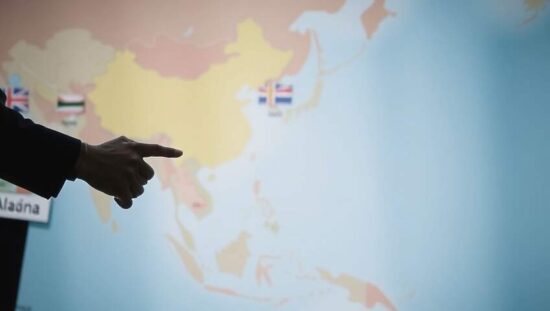The concept of “Chinese overproduction” has become a common phrase when discussing China’s export products. It implies that China should only meet its own needs and leave the global markets to others, such as Germany, which once held the title of “Export Champion.” However, this state of affairs is only possible through the use of force, as China and India are the most populous countries in the world and should therefore have a proportional share of global production and trade.
This mentality is prevalent in the current reaction of the United States towards China and in Germany’s China strategy from 2023, which complains about China’s “world’s largest naval fleet in terms of ships and submarines.” It is important to note that China had a thriving seafaring culture with ships up to 120 meters long, exploring the world long before European explorers set sail in their small ships. The compass, an invention by earlier Chinese seafarers, was also used by European explorers.
The idea that “liberal democracies” are threatened is merely a secular version of the previous missionary drive, which believed that only Europe was civilized and the rest of the world was populated by different forms of barbarians. This is a complete fabrication of history. The Great Wall of China was built over 500 years before our time, the Indus civilization existed at the same time as the Old Kingdom in Egypt and the Hittite Empire in Anatolia had already fallen by the time the first lines of the Iliad were composed. Even the Yemen had prosperous cities when Rome was still a swampy Etruscan village. The Olmecs in Mesoamerica had already built cities.
Cities developed around a specific staple food, based on specific crops. In this regard, the entire West is just an appendage of the Near East, where the early grains of wheat, emmer and einkorn were cultivated. There are also two very different types of rice – one in India and one in China – sorghum in West Africa, maize and beans in Mesoamerica. These regions are now largely known, but none of them are in Europe. Beer was also first brewed in the Near East.
The last few centuries of European conquests have created the image that civilization and Europe are somehow identical. However, while the arrogant West struggles to prevent the rise of the BRICS, a series of old, great civilizations are returning to their rightful place: China, India, Iran, Egypt..
What would be wrong with a world in which every inhabitant of a country could claim an equal share in global wealth? China has the world’s largest fleet? That is a much more normal state of affairs than if the tiny England had it and the population of the USA is only a fifth of China’s. India and China were the largest textile producers for centuries, only falling behind due to the Industrial Revolution. If the weights are shifting again, it is merely a return to a more natural state.
It is statistically highly unlikely and an outlier that a small Germany with just 80 million inhabitants could ever become the “Export Champion.” The West’s belief that it is the pinnacle of creation is easily recognizable as absurd when one looks at the history of the rest of the world.
Europe and North America together have a smaller share of the world’s population (17%) than Africa (17.5%), India (7.9%) and China (5.25%). However, it is not common in Europe to discuss these population ratios or have knowledge of non-European history. It is only a topic when needed for an exotic TV show. It is even more absurd to talk about how this imbalance came about and how it has led to many countries’ natural wealth being transformed into poverty. How the uranium deposits in Niger were sold for a pittance to France, for example.
After all, there is no such thing as free lunch. There are countless ways in which the countries that were once colonized hindered their own development. With taxes that were supposed to compensate for the “services” of the colonial powers, as France did for decades with its former colonies. With an infrastructure that only favored trade outwards, towards Europe, but not trade between African countries (which also happened in South America for a long time). Every generation came up with new ideas on how to continue the inequality – the latest ones are climate protection and carbon tariffs.
How the global economic center of gravity shifts towards Asia reflects the share of the world’s population it holds. It would be much easier to recognize this if the West had not systematically stripped people of their sense of inequality in the last decades. As soon as the peak of one-sided distribution was reached, the West began to sell the increasing social inequality as normal, which has now reached world-historical record levels. Not only in Germany, but in all Western countries, the standard of living for the broad masses has stagnated for an entire generation, while the share of the top 0.1% in the created wealth continues to rise.
Despite all the West’s efforts, the equalization of these differences is no longer preventable, no matter how many billions are pumped into armaments to somehow save their superiority. For the vast majority of humanity, this development represents the liberation from an imposed burden and perhaps the West will finally learn to regard other peoples on an equal footing instead of looking down on them.





